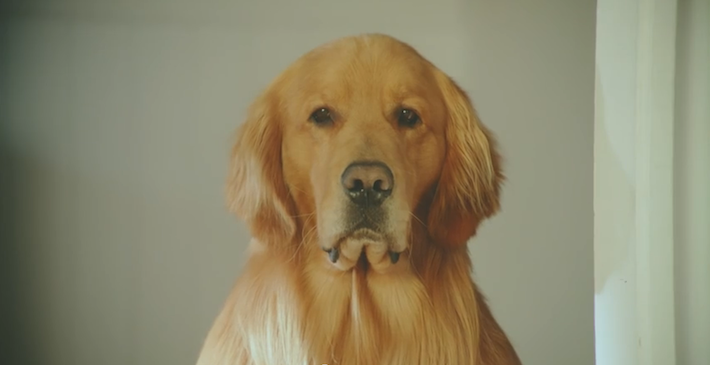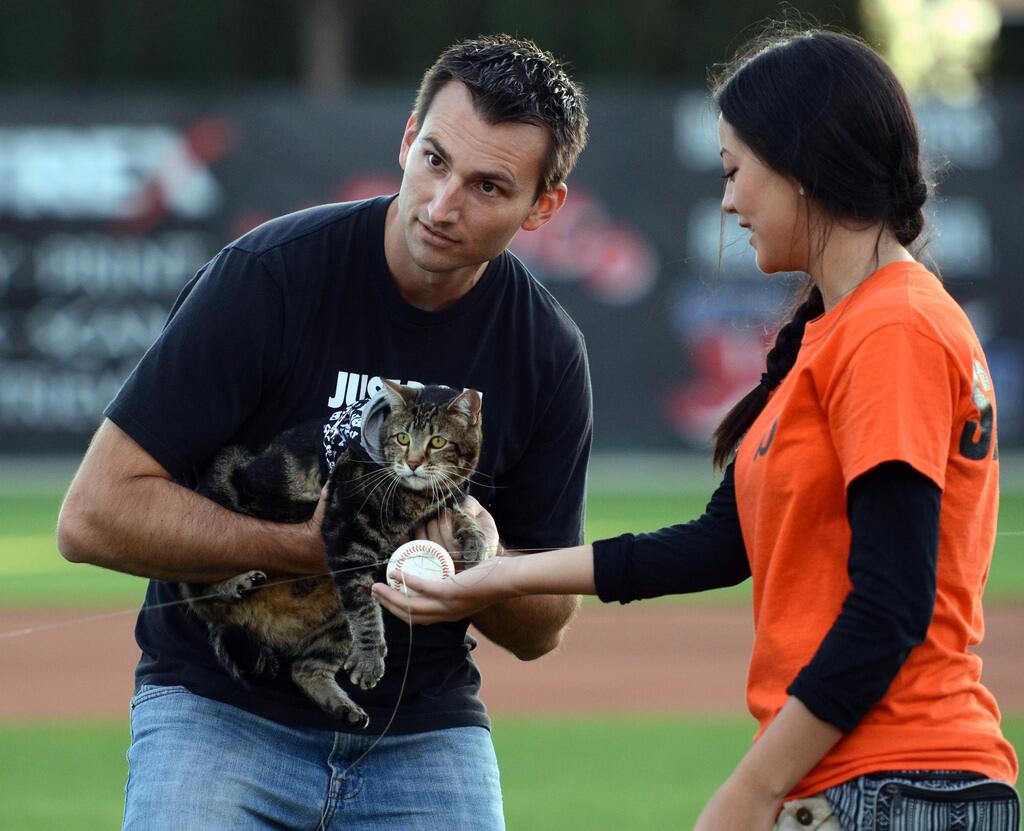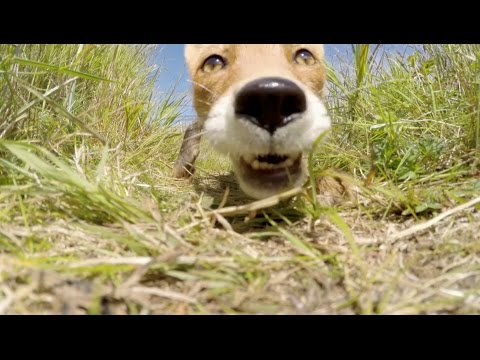Dr. Stanley Coren may be one of the world’s the most well-known dog expert. He lives in Vancouver and first came to the attention of the public when he testified at the OJ Simpson trial over what would/wouldn’t make a dog bark.
Now Dr. Coren has written a piece in Psychology Today that has examined what it’s like for a dog when the dog is being hugged by its owner.
Hugs make humans feel better
Previous research indicates that people feel better when they hug their dogs.
In a story in the New York Times last year, it was reported that Japanese researchers found that dogs who trained a long gaze on their owners had elevated levels of oxytocin, a hormone produced in the brain that is associated with nurturing and attachment, similar to the feel-good feedback that bolsters bonding between parent and child. After receiving those long gazes, the owners’ levels of oxytocin increased, too.
The dog’s gaze cues connection and response in the owner, who will reward the dog by gazing, talking and touching, all of which helps solder the two, the researchers said. They suggest that dogs became domesticated in part by adapting to a primary human means of contact: eye-to-eye communication.
And when researchers gave dogs extra oxytocin through a nasal spray, the female dogs (though not the males) gazed at their owners even longer, which in turn boosted the owners’ oxytocin levels.
“What’s unique about this study is that it demonstrates that oxytocin can boost social gaze interaction between two very different species,” said Steve Chang, an assistant professor of psychology and neurobiology at Yale who was not involved in this latest research.
Dr. Chang, who studies oxytocin in animals, noted that through domestication, dogs came to regard humans as their “key social partners,” while humans also came to view dogs as social partners.
“In a way, domesticated dogs could hijack our social circuits, and we can hijack their social circuits,” he said in an email, as each species learned how to raise the other’s oxytocin levels, facilitating connection.
Hugs stress dogs out
So while dogs and humans may get some increased levels of oxytoxin when gazing at each other, Coren’s research has found that dogs actually get stressed when they’re hugged. In a piece in Psychology Today, Coren wrote that he had brought his dogs to be part of a “Doggy De-Stress Day” on the campus of a local university.
The practice has become common at colleges in North America especially during midterm or final exam times when dogs are brought in to help students de-stress.
It’s also happening at airports where dogs are increasingly being brought in to help nervous passengers relax before their flights.
Coren wrote that at one point during the de-stress day at the university, a woman came over to hug his Nova Scotia Duck Tolling Retriever puppy and while the puppy was tolerant of any form of interaction, he indicated he was stressed out by breaking off eye contact. The puppy’s ears went down and he gave a small stress yawn. Coren said he told the student:
You really shouldn’t hug a dog. They don’t like it and it raises their stress level.”
The girl looked at Coren with an expression of disbelief and said”
I’m studying developmental psychology and there’s lots of evidence which says that hugging is important and pleasant. When a mother hugs her child the child gets a surge of the hormone oxytocin and so does the mother, and that hormone is associated with loving and bonding. There is evidence that says that if parents don’t hug and touch their child a lot, that child can grow up to be emotionally stunted. So how can you tell me that hugging isn’t good for dogs, especially for a puppy?”
Dogs are technically cursorial animals, which is a term that indicates that they are designed for swift running. That implies that in times of stress or threat the first line of defense that a dog uses is not his teeth, but rather his ability to run away.
Behaviorists believe that depriving a dog of that course of action by immobilizing him with a hug can increase his stress level and, if the dog’s anxiety becomes significantly intense, he may bite. For that reason, certain websites, which try to educate children and parents in order to reduce the incidence of dog bites (such as Doggone Safe), make a point about teaching children that they should not hug dogs. Furthermore, a few years back when a children’s book entitled “Smooch Your Pooch” recommended that kids hug and kiss their dog anytime and anywhere, the American Veterinary Society of Animal Behavior (AVSAB) felt that it was necessary for them to release an official statement that strongly advised parents to avoid purchasing the book, since “this information can cause children to be bitten.”
Given how widely accepted the idea is that hugging is not something that dogs like, and that hugging a dog may be associated with increasing the likelihood of a dog bite, Coren said he was surprised that a search of the scientific literature produced very little experimental evidence to support that belief. He decided to collect data on the issue.
Hundreds of photos studied
The signs of stress and anxiety in dogs are well established, and are easily observable, at least by trained individuals. Obviously at the high-end of stress, we have dogs who bare their teeth. But, there are subtler indicators. The most common sign of anxiety is when the dog turns his head away from whatever is bothering or worrying him, sometimes also closing his eyes, at least partially.
Alternatively, dogs will often show what is commonly called a “half-moon eye” or “whale eye” which is where you can see the white portion of the eyes at the corner or the rim. One common visible sign of stress or anxiety is when the dog’s ears are lowered or slicked against the side of his head. Lip licking or licking a person’s face can also be signs of anxiety, as can yawning or raising one paw. These signs and other similar ones should be easy to detect in stressed dogs. Coren used photographic material to check out whether hugs could stress out dogs.
Internet full of photos of humans hugging dogs
Fortunately, the Internet abounds with photographs of people and their pets. Coren put in the search term “hug dog” or “love dog” and got hundreds of images. He randomly selected 250 and used a variety of criteria to keep the data as clean and precise as possible. He only used photos where the dog’s face was clearly visible and eliminated situations where one might expect the dog’s stress level to rise because of factors other than being hugged (such as when someone lifts a large dog off the ground while hugging them).
Each picture received one of three possible scores:
- One could judge that the dog was showing one or more signs of stress or anxiety;
- One could judge that the dog appeared to be relaxed and at ease;
- One could decide that the dog’s response was ambiguous or neutral. Two examples of dogs that scored as being stressed while they were in the process of being hugged appear below.


Coren said he can summarize his data by simply saying that the results show that the Internet contains many pictures of happy people hugging what appears to be unhappy dogs.
His research showed that 81.6% of the photographs researchers scored showed dogs who were giving off at least one sign of discomfort, stress, or anxiety. Only 7.6% of the photographs could rate as showing dogs that were comfortable with being hugged. The remaining 10.8% of the dogs either were showing neutral or ambiguous responses to this form of physical contact.
I suppose that one aspect of the data that struck me as interesting comes from the fact that the photographs that I used were obviously posts by individuals who wanted to show how much they cared for and shared a bond with their pet. This means that the people who were doing the Internet posting probably chose photos in which they felt that both the person and the dog looked happiest. Nonetheless, around 82% of the photographs show unhappy dogs receiving hugs from their owners or children. This seems consistent with other research which suggests that people, especially children, seem to have difficulty reading signs of stress and anxiety based upon their dogs’ facial expressions.
Much more relevant for the current question is the fact that this data clearly shows that while a few dogs may like being hugged, more than four out of five dogs find this human expression of affection to be unpleasant and/or anxiety arousing.
The clear recommendation to come out of this research is to save your hugs for your two-footed family members and lovers, according to Coren.
It is clearly better from the dog’s point of view if you express your fondness for your pet with a pat, a kind word, and maybe a treat.
h/t: Psychology Today, New York Times




